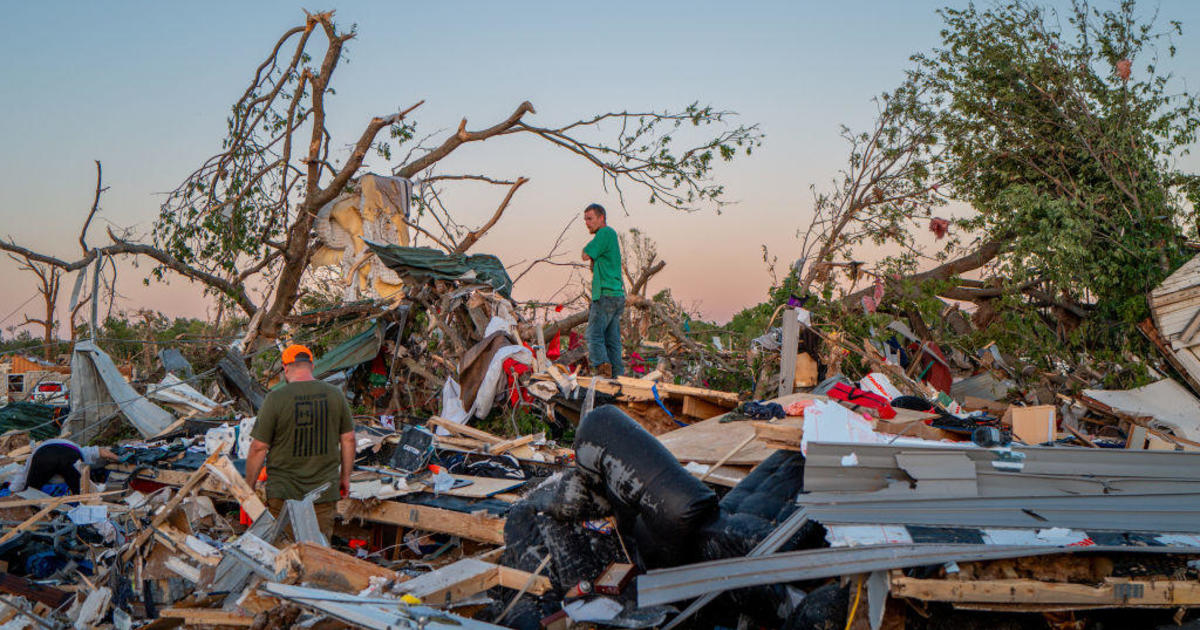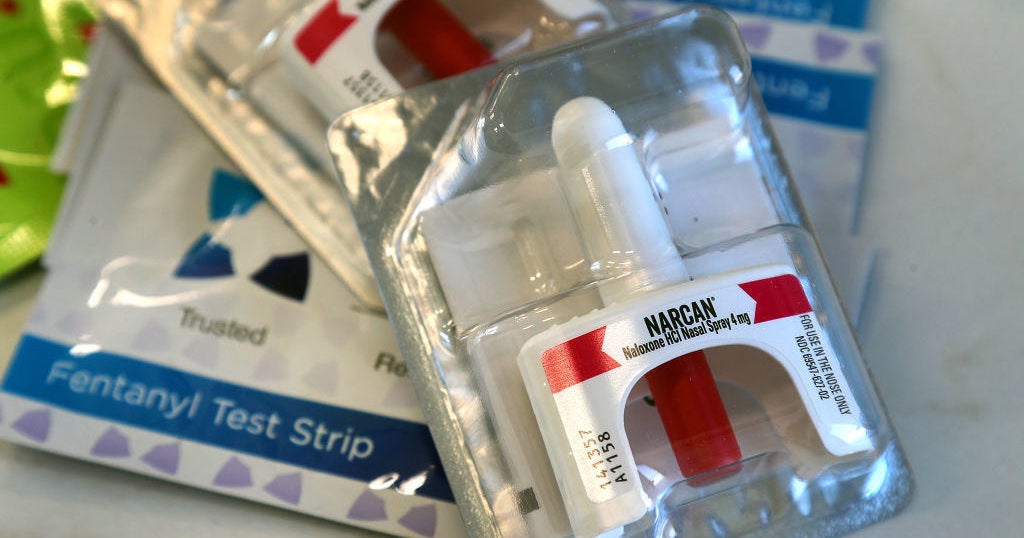Hurricane Harvey may leave parts of Texas "uninhabitable" for months
HOUSTON -- The National Weather Service issued a warning on Friday saying that parts of Texas "may be uninhabitable" for weeks or months after Hurricane Harvey unleashes what could be the fiercest hurricane to hit the United States in almost a dozen years. The ferocity of the storm has prompted a number of highly alarming warnings from the NWS, including advice that people treat this major hurricane as if it were a tornado and shelter in safe rooms.
Harvey became a Category 4 hurricane Friday evening, with sustained winds of more than 120 miles per hour, the National Hurricane Center said in an advisory.
Conditions were deteriorating along the Gulf Coast as Harvey strengthened and slowly moved toward the state, with forecasters warning that evacuations and preparations "should be rushed to completion."
Texas Gov. Greg Abbott warned people that Harvey "is going to be a very major disaster." Abbott said Friday that he's asked President Trump for a federal disaster declaration.
Millions of people were bracing for a prolonged battering from the hurricane. Forecasters labeled Harvey a "life-threatening storm" that posed a "grave risk," saying it could swamp several counties more than 100 miles inland.
Brock Long, director of the Federal Emergency Management Agency (FEMA), says the window for evacuating is quickly closing.
"Texas is about to get hit by a major hurricane," Long said. "We're going to see significant rainfall over the next three days. There's going to be damage."
Landfall was predicted close to midnight along the central Texas coast, between Port O'Connor and Matagorda Bay. The stretch of coastline spans about 30 miles, roughly 70 miles northeast of Corpus Christi.
The center reports the storm has the potential to produce winds hitting 125 mph and storm surges of 12-feet.
"We're forecasting continuing intensification right up until landfall," National Hurricane Center spokesman Dennis Feltgen said.
Harvey grew quickly Thursday from a tropical depression into a Category 1 hurricane, then a Category 2 hurricane early Friday, before reaching Category 3 status at 2 p.m. CT. The last storm to reach Category 3 hit the U.S. was Hurricane Wilma in October 2005 in Florida.
Superstorm Sandy, which pummeled New York and New Jersey in 2012, never had the high winds and had lost tropical status by the time it struck. But it was devastating without formally being called a major hurricane.
All seven Texas counties on the coast from Corpus Christi to the western end of Galveston Island have ordered mandatory evacuations of tens of thousands of residents from all low-lying areas. Officials in four counties ordered full evacuations and warned there was no guarantee of rescue for people staying behind.
Voluntary evacuations have been urged for Corpus Christi and for the Bolivar Peninsula, a sand spit near Galveston where many homes were washed away by the storm surge of Hurricane Ike in 2008.
On Thursday, Texas officials expressed concern that not as many people are evacuating compared with previous storms.
"A lot of people are taking this storm for granted thinking it may not pose much of a danger to them," Abbott, the Texas governor, told reporters in Houston. "Please heed warnings and evacuate as soon as possible."
Abbott has activated about 700 members of the state National Guard ahead of Harvey making landfall.
Harvey's effect is expected to be broad: The hurricane center said large storm surges could be expected as far north as Morgan City, Louisiana, some 400 miles away from the anticipated landfall.
And once it comes ashore, the storm is expected to stall, dumping copious amounts of rain for days in areas like flood-prone Houston, the nation's fourth most-populous city, and San Antonio.
State transportation officials were considering when to turn all evacuation routes from coastal areas into one-way traffic arteries headed inland. John Barton, a former deputy executive director of the Texas Department of Transportation, predicted state officials will do so before the storm hits. But storms change paths, and if contraflow starts too early, supplies such as extra gasoline needed to support impacted areas can't get in, he said.
This would be the first hurricane for Bethany Martinez, who is pregnant and has two sons, ages 5 and 6, who were with grandparents in Austin. Asked about her demeanor, Martinez said: "Afraid."
She's a front desk clerk at a Holiday Inn Express at Port Aransas.
"We are closing down," Martinez said, of the 74-room hotel a couple blocks from the Gulf of Mexico. It was about two-thirds full before all guests were cleared out.
Driscoll Children's Hospital in Corpus Christi was airlifting at least 10 critically ill, mostly premature infants from its neonatal intensive care unit to Cook Children's Hospital in Fort Worth. They were expected to arrive by early Friday. Cook transport director Debbie Boudreaux said the infants were being moved inland for fear that power outages might disable their ventilators.
Harvey would be the first significant hurricane to hit Texas since Ike in September 2008 brought winds of 110 mph to the Galveston and Houston areas, inflicting $22 billion in damage. It would be the first big storm along the middle Texas coast since Hurricane Claudette in 2003 caused $180 million in damage.
It's taking aim at the same vicinity as Hurricane Carla, the largest Texas hurricane on record. Carla came ashore in 1961 with wind gusts estimated at 175 mph and inflicted more than $300 million in damage. The storm killed 34 people and forced about 250,000 people to evacuate.
Mr. Trump tweeted that he had been briefed on the storm and was ready to "assist as needed."
In Houston, one of the nation's most flood-prone cities, Bill Pennington prepared his one-story home for what he expected would be its third invasion of floodwaters in as many years and the fifth since 1983.
"We know how to handle it. We'll handle it again," Pennington said he told his nervous 9-year-old son.
Dozens were in lines Thursday at a Corpus Christi Sam's Club, at home improvement stores and supermarkets. Alex Garcia bought bottled water, bread and other basics in the Houston suburb of Sugar Land after dropping his daughter off at college. He said grocery items were likely more available in Houston than back home in Corpus Christi, where Garcia, a beer distributor salesman, said stores were "crazy."
"We'll be selling lots of beer," he laughed.
In Galveston, where a hurricane in 1900 went down as the worst in U.S. history, City Manager Brian Maxwell said he was anticipating street flooding and higher-than-normal tides.
"Obviously being on an island, everybody around here is kind of used to it."



